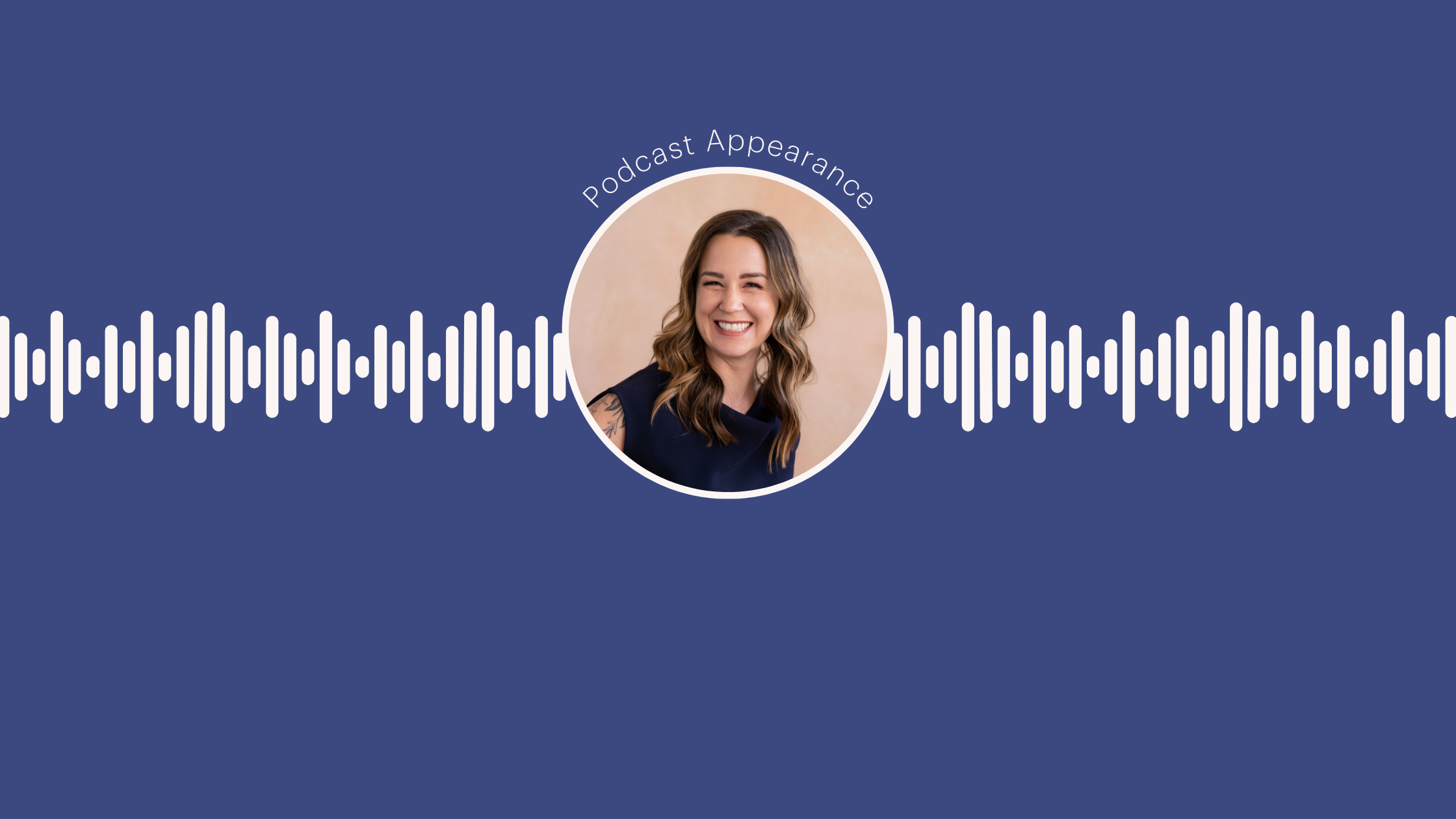Marketing for Wellness Brands: Learn How to Change Your Audience’s Mindset
Attract more patients with marketing for wellness brands that uses strategies & communication focused on positive change.
How To Change A Mindset, Not Just How To Change A Mind
“When someone is investing money and time, that decision making process is a little different. And we call that change marketing because we're not just changing their mind in terms of what brand of paper towels they want to use. We actually have to change their mindset to take on a new habit or take on a new goal for their health. And that requires a little more thought and nuance. And so, it's how to change a mindset, not just how to change a mind.” – Jackie Bebenroth, Founder & Principal, Muse
Read on for more insight from Muse founder Jackie Bebenroth during her podcast interview with Kim Foster on Marketing and Mindset for Wellness Coaches.
This transcript has been edited for brevity. Listen to the complete interview here.
Kim: Let’s get into this topic for today. I want to talk about the concept of change marketing. What exactly is change marketing?
Jackie: Change marketing is a philosophy that we have here at Muse that really is about an alternative buyer's journey. And what I mean by that is that there is a way that someone makes a purchase in their mindset. They go through a series of decisions, whether they're buying a light bulb or a can of paint or deciding which gym they want to join for their New Year's resolution. And when someone is investing both money and time that decision making process is a little different.
We call that change marketing because we're not just changing their mind in terms of like what brand of paper towels they want to use. We actually have to change their mindset to take on a new habit or take on a new goal for their health, and that requires a little more thought and nuance.
It's a phrase that we've coined here at Muse to really work with our brands around how to change a mindset, not just how to change a mind.
Kim: That's really cool. And absolutely. I mean, this is the business that the people who are in my audience and are listening or watching today are absolutely in. That's the business that we're in. It’s helping people to change so many really tough things to change in their life.
Tell me a little bit more about what you mean about “change their mind versus change their mindset.”
Jackie: I've done a lot of work in studying behavioral change so that I can better serve our clients who are really selling transformation in one way or another. In order to transform someone, you have to really be with them for the long haul and help them through all their struggles and attempts and failures and starts and stops.
When we think about changing a mindset, that's not simply convincing them to buy our service. Changing a mindset means not only do we convince them to buy into our service, but they're also buying into our process and our method. And we are earning their trust along the way. This type of marketing is very different than buying a commodity at a grocery store. This type of process requires not just that conversion point, that moment when they give you their money and in turn give you their trust. But it also is about how you're communicating with them to help them understand the many supplemental benefits of these changes so they're more likely to stay with you for the long haul. And in marketing, we call that increased client lifetime value.
Our goal as an agency is not just to help our clients acquire new customers. It's to help them maintain and retain those relationships over time, because we know, and I'm sure your audience knows that impact, that transformational impact takes a while. It is not a quick fix. And so what are the communication techniques that need to happen to cultivate that relationship and build on that trust?
Kim: Yeah, that makes a ton of sense because you're right. Many of the people in my audience are coaches, right? So, they want people to buy a coaching program or package, which is so much more of an investment, not just financially, but a time commitment and, can I really do this?
I know these are the objections that people hear, right? Do I have time for this? Am I up for it? I'm not sure if I can do it. All of those kinds of things, which is a completely different thing, that set of objections, that needs to be overcome rather than, like you said, just go to the grocery store.
You know, nobody has an existential crisis over whether they have time for this apple or this kind of toilet paper. It doesn't bring up any of those issues. But when you're saying to somebody that to purchase and to invest in this program, it's going to require some work on your part to do some of these transformational lifestyle habit changes.
So, it's a very different marketing message. What are some of the things that people can do? Because I know this is the thing that you help people with. How do you communicate and how do you “convince” somebody that this is a good thing to do? And they don't need to have an existential crisis over it!
Marketing for Wellness Brands
Connect with our team of change marketers for a wellness brand communications assessment.
Jackie: I think there are a couple of things. It's important to understand the mindset of the person that you're about to serve. We live in this quick fix society. We live for this instant self-gratification. When you look on Instagram or anywhere and there's before and after shots. People have this in their mind; that they're just going to go from point A to point B. And they're just going to get there and we all know that that's not true.
So, the most important thing when you're in that sort of space of closing the deal, or perhaps when they're just starting out with you and that that relationship is new, the most important thing you can do is give them a roadmap. If you haven't thought about a process visual, this is a very important communication tool that has been proven in studies to improve client satisfaction and improve longevity of the client. If you have a multi-step process (and if you don't, come up with one!). The first part is discovery, and the next part is diagnosis, and the next part is planning. So, now you've got these steps.
And you've got that laid out in a visual help people understand what the method to your madness is, and also where they're going to be throughout the journey with you. So, say they are moving from stage one to stage two, what metrics have you both agreed on that are important to measure that jump to the next stage of your process? When people understand where they are in your program, they are more likely to want to move forward to a commonly agreed upon destination versus if you're just like, trust me, we're going to work together every week, this is going to be great.
People feel lost and ultimately if you don't tie that into some sort of measurable quick win it's not going to last. They might finish the program and then they'll leave, or they might not even finish the program because they're just not convinced that there's any progress being made.
Kim: So, it sounds like one of the things that you need to get to convey is kind of that sense of like confidence and trust. If you can present a journey, or a roadmap I think that's what you called it, or a blueprint where people can see visually. So that's a really great tip that when people can see something visually and can see the whole framework laid out, it does give that feeling of confidence.
Jackie: Yeah, it gives confidence. People are skeptical. And consumers are more informed than ever before. So, not only does it show them that you know what you're doing, it also shows them that they are going to be progressively improving along the way.
And if you just make that claim and walk away without any sort of evidence or proof, they're more likely to forget it. So, I always encourage our clients, not only to have that process, but even to put it on your website. It could be a differentiator between you and a competitor. Then pull it out and use it throughout the program so people truly understand. I am being guided, and that's why I like that analogy of a roadmap for navigating through the many challenges of the journey.
Kim: Yeah, agreed. Because it's that skeptical piece. I totally agree. And it creates that feeling of like you are in good hands, they can trust that you've got them, that they're not just going to be left to wander and figure it out themselves. It gives that extra piece of confidence and trust that you're going to help them because it's very clearly mapped out. So, I love that.
Of course, I have to say change is pretty scary. Just the word change is pretty scary for a lot of people. So, what about those people who just don't like change or say that they don't like change or they even fear the word change? How do we communicate with people who are in that mindset?
Jackie: Oh my gosh, well you just hit on an actual moment in my life where I actively chose to focus on the topic of change because when I was a young copywriter at a large agency, back in my twenties, I used the word change. I forget what I used it on like a website or something. And I was like, “this product is going to change your life,” and my creative director came to me and said, “Okay. Never use the word change in advertising. You are going to scare people. They are going to run the other direction. Change is scary.” And I was like, really? And she actually said to instead use words like evolve or transform. It's warmer.
But you're right, change is scary. So, what I would say in having deeply studied this, again, I'm not a behavior change scientist, but I study behavior change through the lens of communication. What I found is one study in particular really piqued my interest. It was this concept that people often make decisions based on the fear of the status quo, not on the optimism for the future.
So, here's the difference in how that sales conversation goes: Kim, you told me that you have some back pain, you're not feeling yourself, you have chronic fatigue, you're just really not living your life to your full potential. Well, my program is going to fix all that. You are going to wake up in the morning, you're going to skip to work, and you are just going to have more energy than you can even handle. Are you ready to get started?
So, that is like rainbows and roses, right? And I think a lot of brands really position themselves that way. Here are the claims of the outcome. This is what you want. We're going to deliver that. But what's interesting is psychology shows us that if you position it, not as a fear-mongering tactic, but more like: Kim, you told me your back pain. Your chronic fatigue is holding you back from making strides in your career, from being a better wife. You're just not feeling yourself. You've tried all these things. You've tried coffee. You've tried cleanses. You've tried new workouts. And it just doesn't seem to be working. If you don't move forward with this program, what is the alternative?
And that is the conversation that then gets you thinking, gosh, I better do something and I've already tried all these things, so why not? It poses that why not? And I think when you're in that sort of closed conversation, when you're about to sell, those are the types of conversations that really move the needle and get people to say yes.
Kim: Oh, that difference is super clear and it does remind me, I certainly have heard many times that people will say they are much more willing to invest in something that solves a problem or gets them out of a pain than to invest in something that's going to give them something aspirational.
And not everybody is like this, but many people are more motivated to solve a problem. I'd love to hear if you have found that is true in your experience? But, it sounds like that's what you're saying too, is that the problem here is staying stuck. Is that nothing's ever going to change. This is going to be your life that you are just going to have to put up with forever. Unless you do something about it. Unless you actually do take that very first step. So, am I getting it?
Jackie: Yeah, that's absolutely right. The only thing I'll say to add to that is managing their expectations of the work.
And you alluded to this earlier where it's like, okay, this isn't going to be easy. It's going to take time. It's going to take effort. But again, what's the alternative? You can stay stuck or you can take action and what's great about this action is you're going to have a guide and you can feel confident in this process that I've done for over X number of people who have achieved what they want. So, let's do this. You know?
Kim: Yeah. I love that. That makes a ton of sense. I think that's going to be a great clarifying point for people to filter their marketing messaging through, right? Am I really speaking to help them see that I've got the way to help them out of this, like nothing's ever going to change. It's going to stay stuck, and are you okay with that? Especially to help people who are intimidated by change or kind of freaked out at the idea of just the word change. Do you think that that's still true? What your manager or supervisor said to you about don't use the word change?
Jackie: It depends on the circumstance, truly. These days, no. We almost exclusively work with transformational brands, so that's their goal. To activate some kind of change.
The more transactional the purchase, typically the more you want to stay away from change, and reserve that word for truly change making activities.
#####
Connect with our team of change marketers here for a wellness brand communications assessment.
More Good Reads

Q&A: Navigating AI Overviews, Site Traffic Drops & the New Frontier of Search
Lauren Konst interviewed Matt Burkarth, a digital marketing expert from WTM Digital, for actionable tips on surviving and thriving in the AI-driven content landscape.

Modern Wellness Customer Personas: 2025
How to target different wellness motivations of consumers, updated for 2025.

